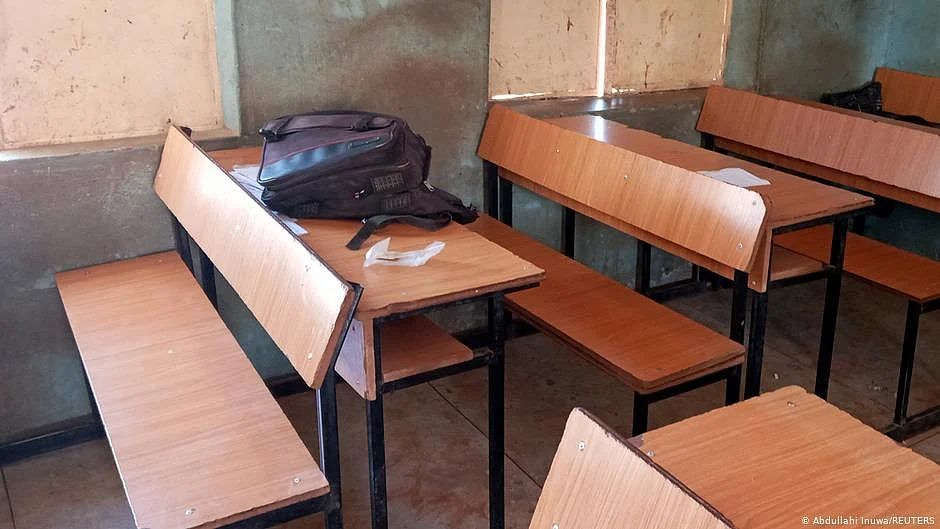Learning poverty in India to induce huge loss of jobs and GDP; likely to suffer worst in South Asia
The study estimates that school closures will deny about 5.44 million people around the world employment in the skilled labour force by 2030

COVID-19 crisis triggered school closure in India has induced learning poverty to such an extent that the country is set to suffer the worst in South Asia in absolute terms both in respect to jobs loss and decline in GDP, which in turn may accelerate each other creating together a vicious circle of shrinkage in both.
Jobs for skilled labour in India will decline by 1 per cent while it would be 2 per cent for unskilled labour on account of this single factor, says a recent ADB Economics Working Pager titled “Potential Economic Impact of COVID-19 related School Closures”. Due to largest populated country in the region, it would be translated into greatest number of jobs loss in absolute terms.
As for the GDP, India will also suffer the highest decline in South Asia at about $98.84 billion in terms of absolute change in 2030. In percentage terms its GDP will decrease by 0.34 per cent in 2023, 1.36 per cent in 2026, and 3.19 per cent in 2030. Due to the largest size of the economy in the region, it would translate into worst loss in absolute terms.
However, in percentage terms, the effect will be deepest in Nepal in this region, where GDP is forecast to fall by 0.48 per cent in 2023, 1.42 per cent in 2025, 4.34 per cent in 2028, and 4.97 per cent in 2030. The share of unskilled labour employment in Nepal is well above other South Asian economies, so the impact looks more pronounced. Nepal will experience the highest decline in the employment among both skilled and unskilled labour in terms of percentage. Employment of skilled labour in Nepal will decline by 1.15 per cent in 2025 and by 3.84 per cent in 2030, while declines for unskilled labour will be 1 per cent in 2025 and 3 per cent in 2030.
Decline in skilled labour employment in India will be around 0.214 per cent next year in 2023 which will increase over three times to 0.731 per cent in 2026, and about five times to 1.015 per cent in 2030. For unskilled labour the decline in employment will be 0.243 per cent in 2023, which will further deteriorate to a decline of 0.853 per cent in 2026 and 2.016 per cent in 2030.
The study says that the labour productivity loss calculated for closures in secondary education is taken in this model as a shock to the unskilled labour for the period 2023-2030 as it takes at least three years for secondary school graduates to enter the unskilled labour force. The loss in primary education is fed into unskilled labour for 2026-2030 as primary school students would take more time to enter the labour force. The loss in tertiary education is also passed into 2026-2030 as college students will need to extend their time in study to compete higher education and join the skilled labour force.
When calculated on this basis, the study puts the annual average shock to labour productivity in India for unskilled labour $408.43 million and for skilled labour $72.65 million which combined earning loss of about 4.7 per cent. The annual average shock to labour productivity for those in primary education will be 0.343, in secondary education 2.145, and in tertiary education 6.657 per cent.
The study estimates that earning losses from school closures led GDP to fall in almost all economies, including the sub-regions of Asia. Globally, the decline amounts to 0.19% of GDP in 2024, 0.64% in 2028, and 1.11% in 2030. In absolute terms, school closures during COVID–19 would cost the global economy $943 billion in 2030. Overall, economies with significant population of school children and college-going youth in rural areas—and in the poorest and second wealth quintile—have been worst-hit as they lack access to stable internet connections needed to study online. Also, if the share of unskilled labour employment in the labour force is high, learning and earning losses are significant. That is because a notable portion of the impacted population will migrate to the unskilled labour force.
Considering skilled labour, global losses to employment amount to declines of 0.05% in 2024, 0.25% in 2026, and 0.75% in 2030. The study estimates that school closures will deny about 5.44 million people around the world employment in the skilled labour force by 2030. Also, in terms of absolute costs, lost wages to the baseline scenario total $94.86 billion.
For unskilled labour, the global contraction in employment is estimated to be 0.22% in 2025, 0.51% in 2027, and 1.15% in 2030. Around 35.69 million people around the world would have made into the unskilled labour force had the pandemic did not lead schools to close. In terms of cost, lost wages amount to $121.54 billion in 2030.
The study has found that in economies with significant student populations from rural areas, those in the poorest and second wealth quintile have been the worst hit. This is because a lack of access stable internet connections and online education hampers their learning opportunities. Learning and earning losses are also significant in economies where the share of unskilled labour employment in the overall labour force is high. This is because school closures will push a notable portion of the impacted students into unskilled jobs.
In this backdrop, the study has made three policy recommendations about actions to mitigate these impacts while building a more resilient education system. These recommendations are: Support learning recovery; Invest in education and skills; and embrace the digital transformation in education.
(IPA Service)
(Views are personal)
Follow us on: Facebook, Twitter, Google News, Instagram
Join our official telegram channel (@nationalherald) and stay updated with the latest headlines
